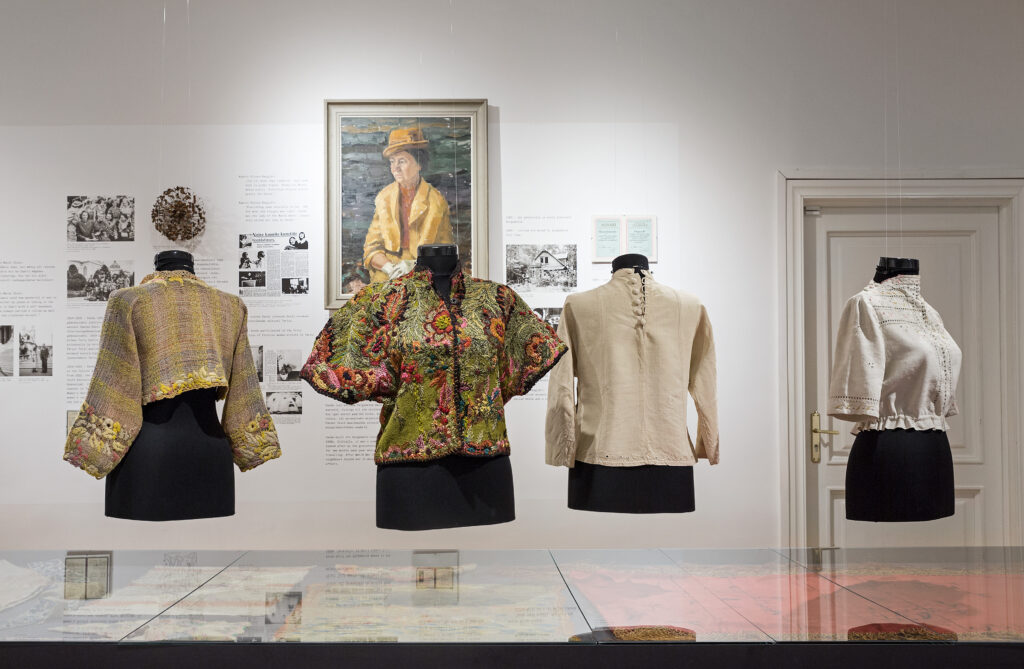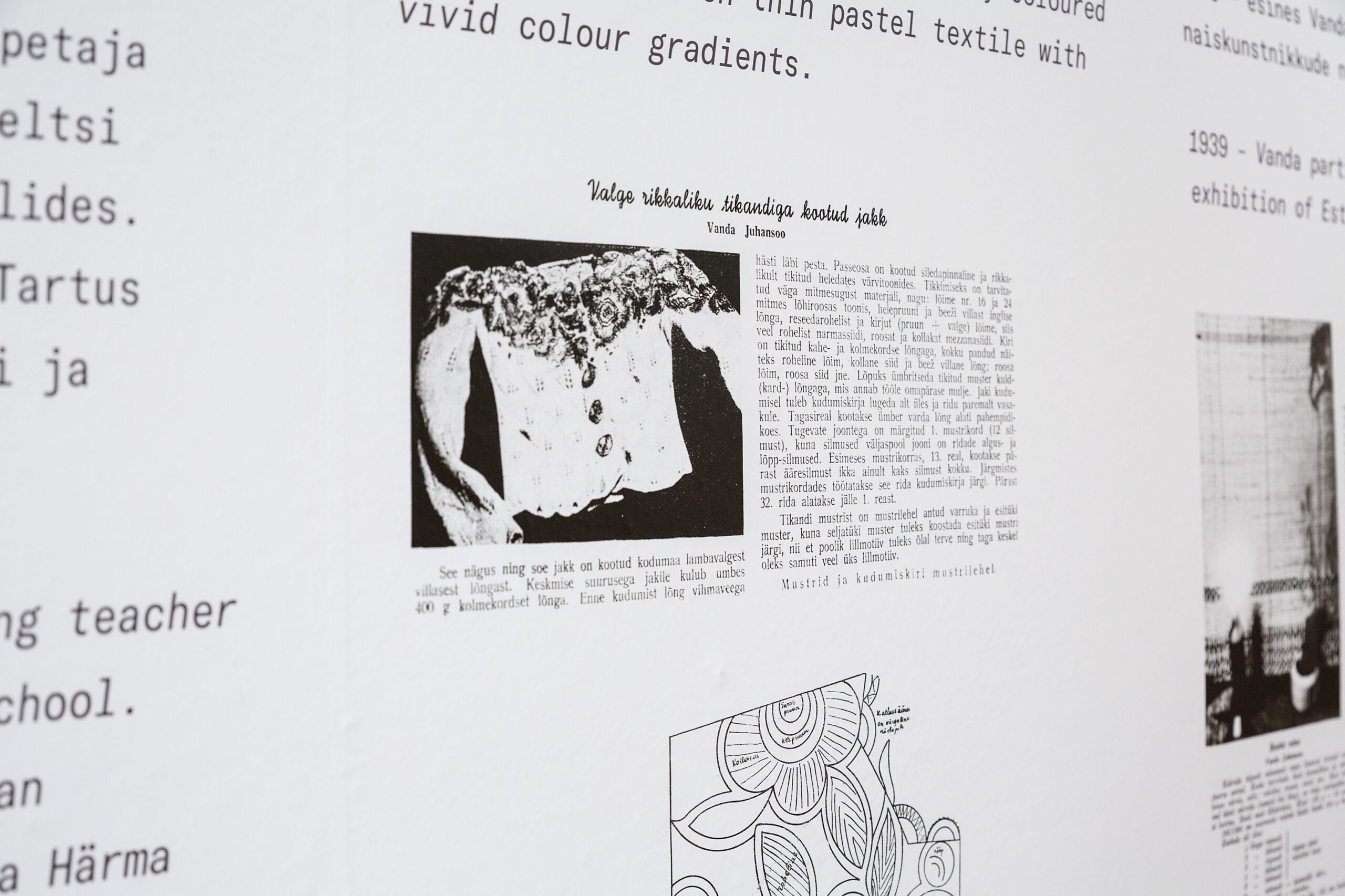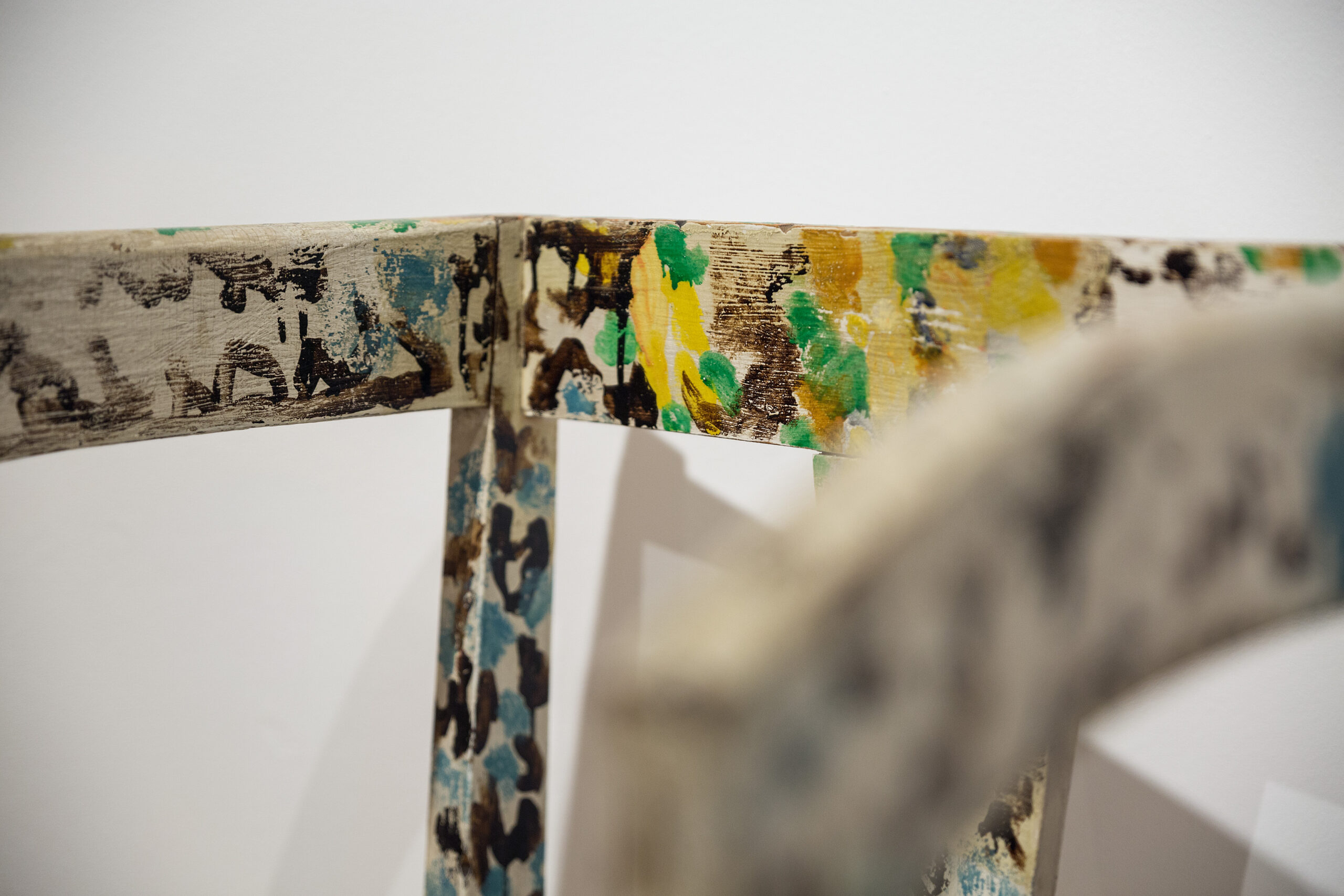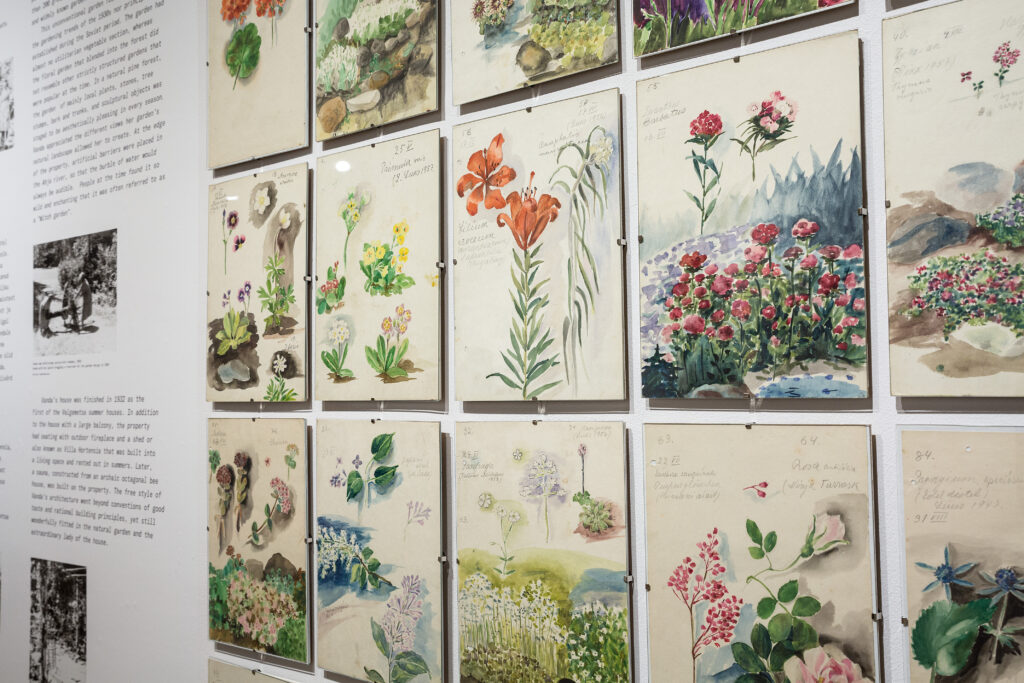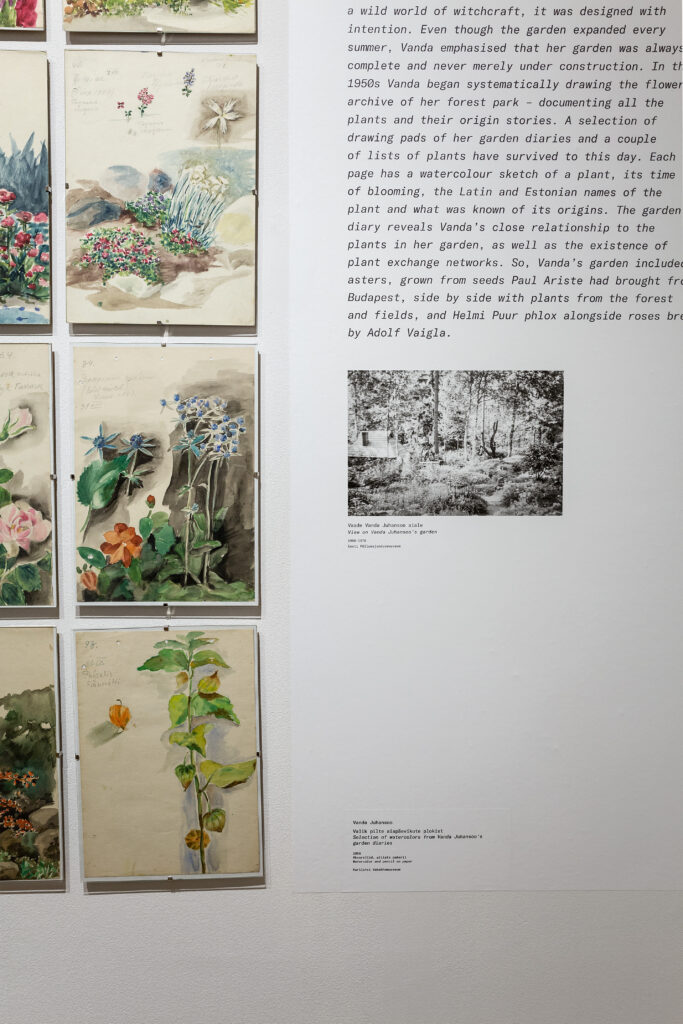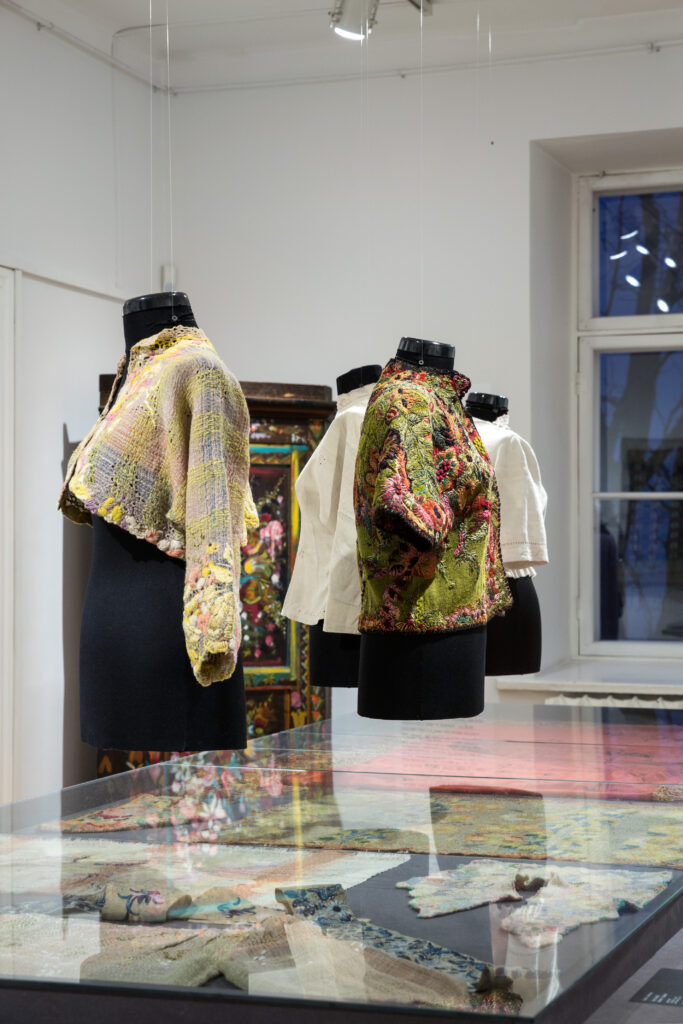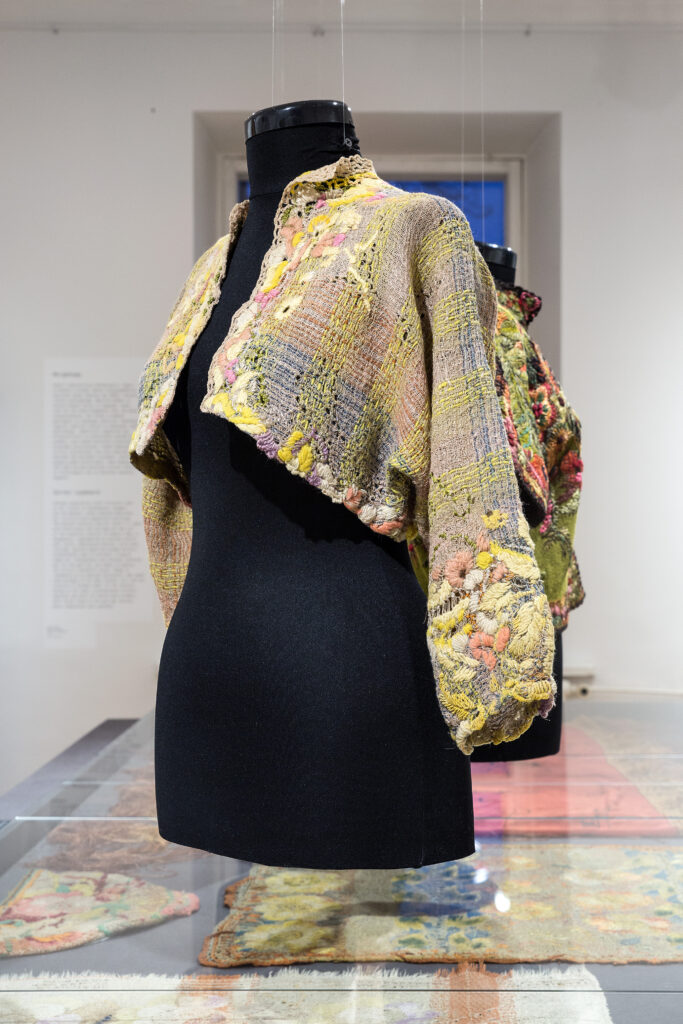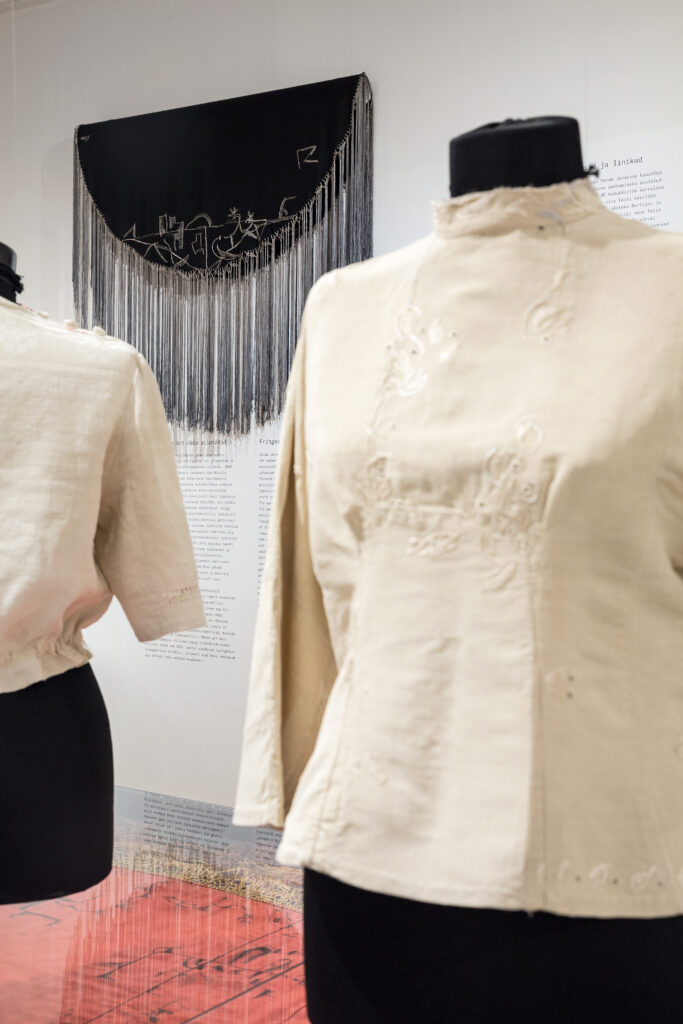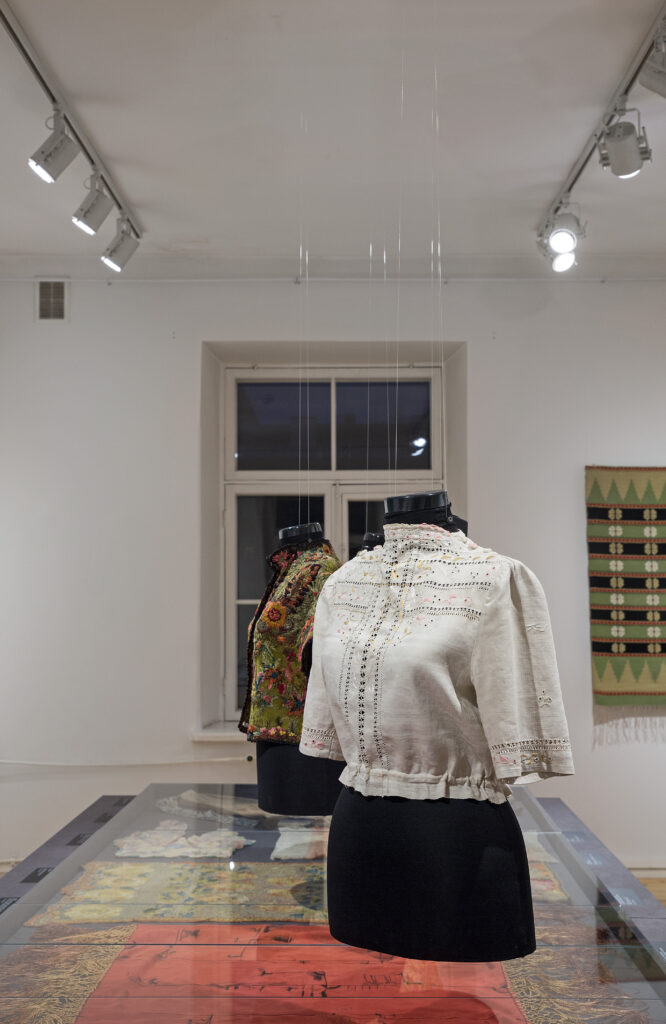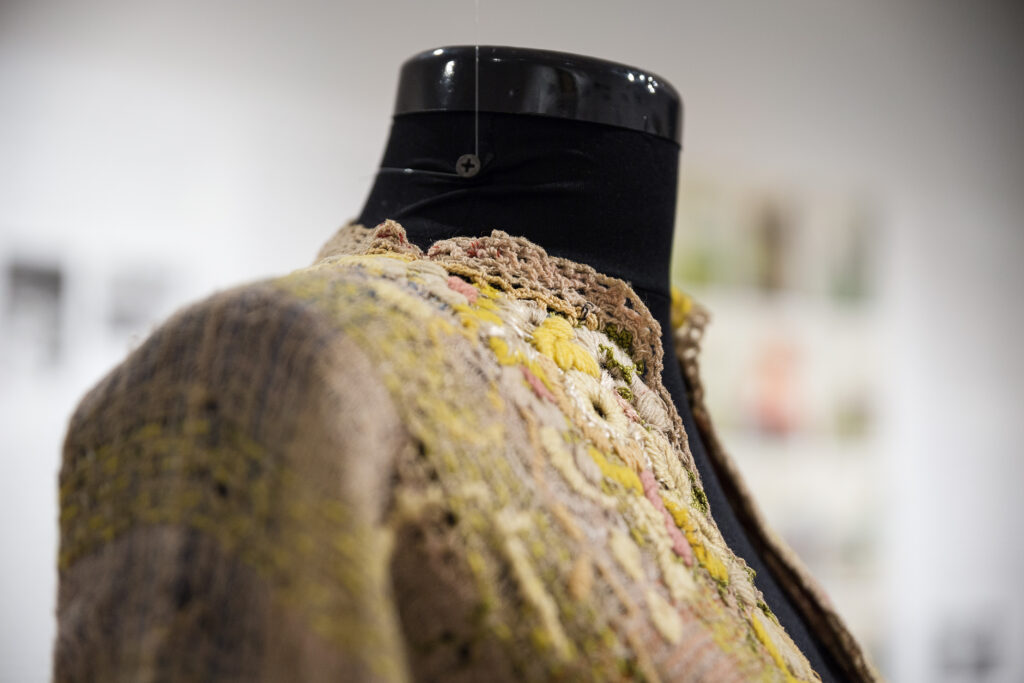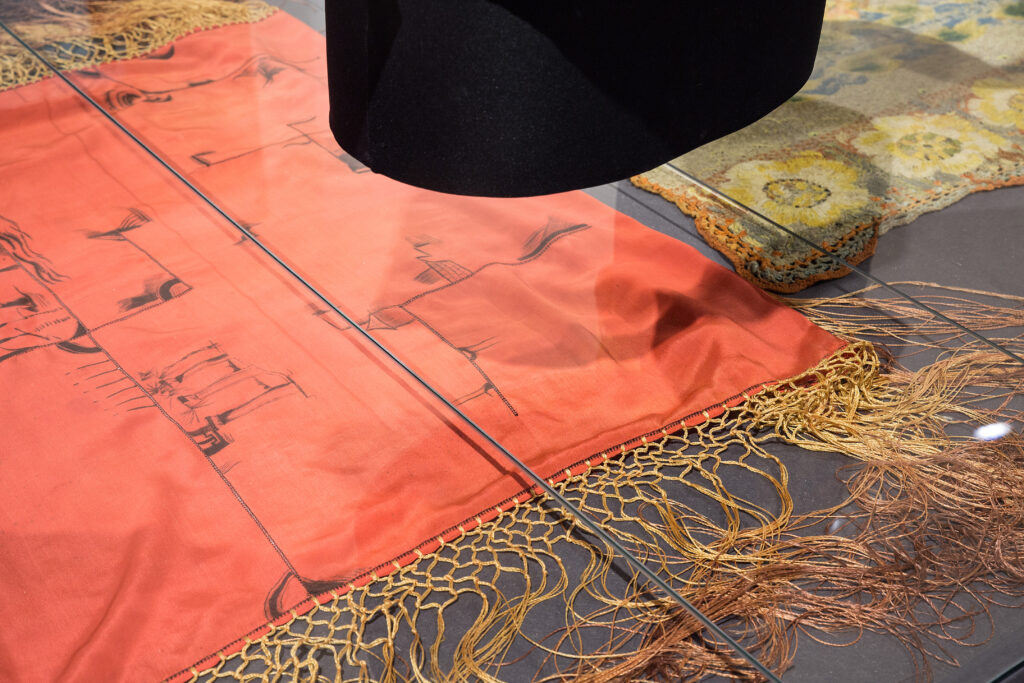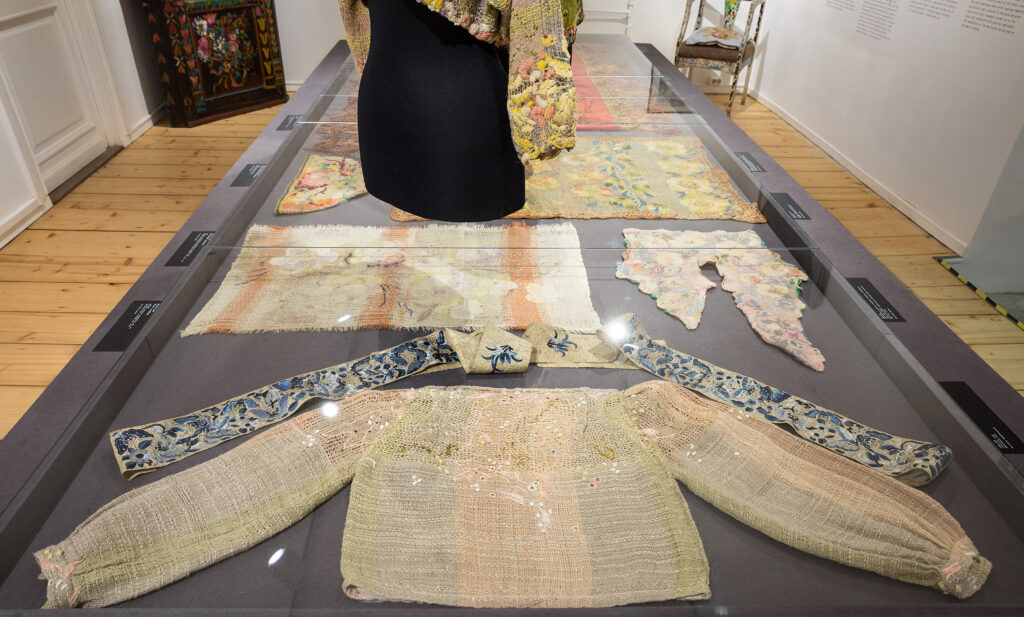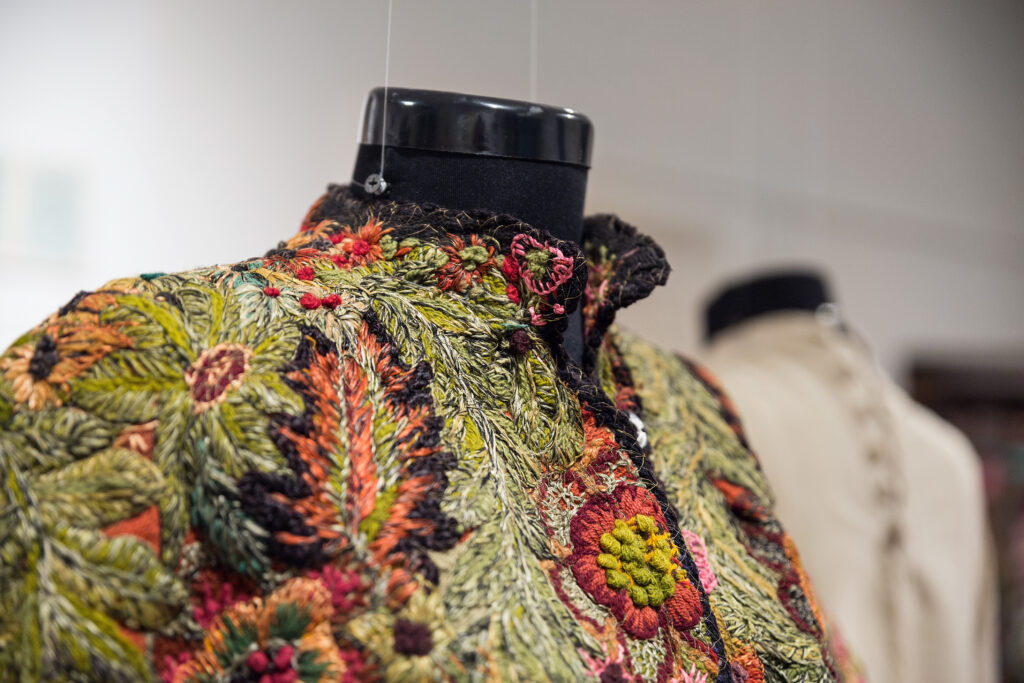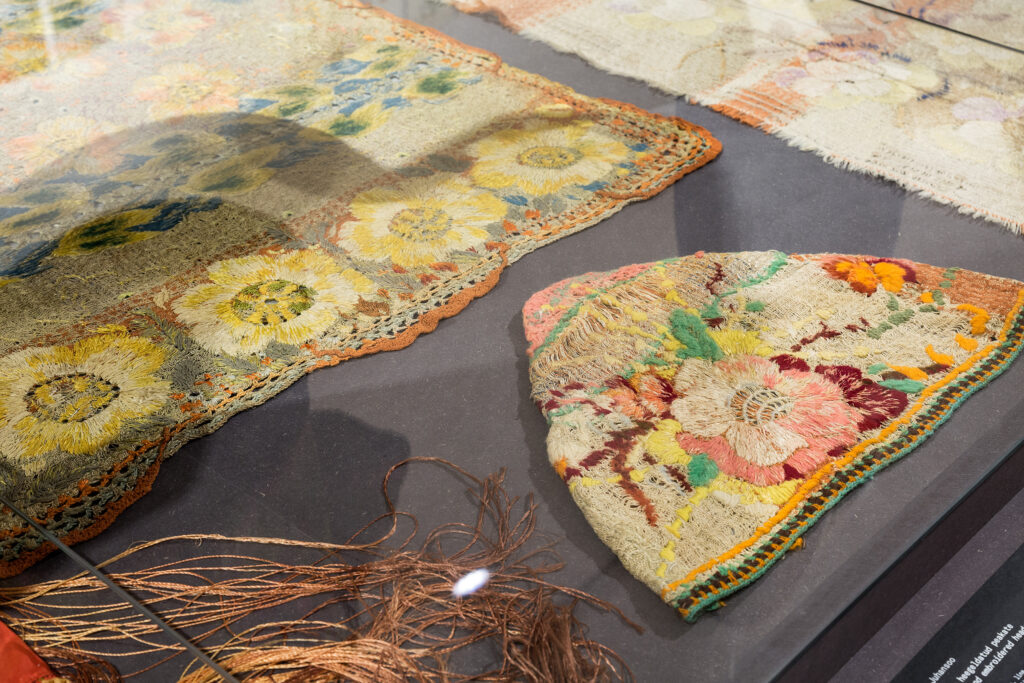Archive
Vanda Juhansoo: Artist or Eccentric Woman?
18.01.2020-01.03.2020
Gallery

Vanda Juhansoo (1889–1966, Johanson until 1939) was a porcelain painter and furniture designer by education; however, she was known as a textile and craft artist, traveller, polyglot, notable art teacher, interior decorator, advocate of women’s craft, soroptimist and gardener, and sometimes also known as the Witch of Valgemetsa. Vanda Juhansoo graduated from The Central School of Applied Arts Ateneum, which makes her one of the first Estonian women artists with a higher education from the beginning of the 20th century. Her contemporaries and fellow students from the Ateneum were the ceramicists and advocates of women’s rights and education in Estonia, Juuli Suits and Alma Koskel-Johanson, but also the painters and tapestry artists Oskar Kallis and Adamson-Eric.
From beginning to end, Vanda Juhansoo’s life was quite exceptional for a woman of her time. Born to parents living in Musta manor near Ahja, Vanda received her secondary education at home, and in 1909 she went to Helsinki to study interior design. Even though Vanda specialised in ceramics and furniture design, as a student she received most recognition and travel grants for her embroidery. From there on, Vanda spent her summers over the next thirty years travelling in Europe. Between 1912 and 1945 Juhansoo exhibited her ceramics, embroidered doilies and curtains in various exhibitions, including the first ever Estonian women artists’ show in 1939. Unfortunately, most of Vanda Juhansoo’s oeuvre was so ephemeral that there is very little trace of it left. The legendary garden has grown into a forest, the house has new owners and most of the textiles have disappeared. Nevertheless, the curators have tried to trace back and recreate some of the wonderful world that Vanda created all around herself with her designs, handicraft, paintings, photos and memories from museums, archives and from people who knew her.
Looking at the life, work and legacy of Vanda Juhansoo, we can ask: What were the choices for women artists in Estonia at the beginning of the 20th century? Why are Vanda’s works found mainly in the collections of ethnographic memory institutions rather than in art museums? Why did Vanda become the so-called Witch of Valgemetsa and not a recognised applied artist? With this exhibition we try to understand how the role of applied art has changed in art history and make space in art history to accommodate brilliant artists and notable personalities like Vanda Juhansoo and her contemporaries.
Forced by circumstances, Vanda Juhansoo eventually devoted her creativity to teaching art, which she had done since 1914 and continued with until retiring in 1957. After World War II, Vanda stopped exhibiting and publishing her patterns in craft magazines. Instead, she committed herself to teaching drawing and supervised a number of children’s art classes in Tartu that produced many well-known artists, such as Helgi-Maret Olvet, Silvia Leitu, Maire Männik and Kaljo Põllu. The memory of Vanda has largely been kept alive by her students, who remember her as a particularly bright and optimistic person, even though after World War II everyone, including Vanda, were grieving. In addition to her embroidery, Vanda’s original style remained visible as she expressed it in her memorable multicoloured hair nets and abundant jewellery, as well as in the striking Valgemetsa summer house and garden.
Exhibition curated by Andreas Kalkun (Estonian Literary Museum), Rebeka Põldsam
Graphic design: Stuudio Stuudio
We would like to thank Eve Kiho, Kalju Konsin, Enn Lillemets, Helgi-Maret Olvet, Tuuli Otsing, Tiiu Niinemägi, Karilatsi Open Air Museum, Estonian National Museum, Estonian Agricultural Museum, Estonian Literary Museum, Estonian Folklore Archives, Art Museum of Estonia archives, National Archives of Estonia, Estonian Museum of Architecture
Sources: Elve Aasa, Karin Otter, Erika Pedak, Liis Pihlik, Sigrid Saarep, Kai Stahl, Anni Varma
Publications
Leaflet “Vanda Juhansoo: Artist or Eccentric Woman?” (PDF)
Gallery
Photos: Hedi Jaansoo
